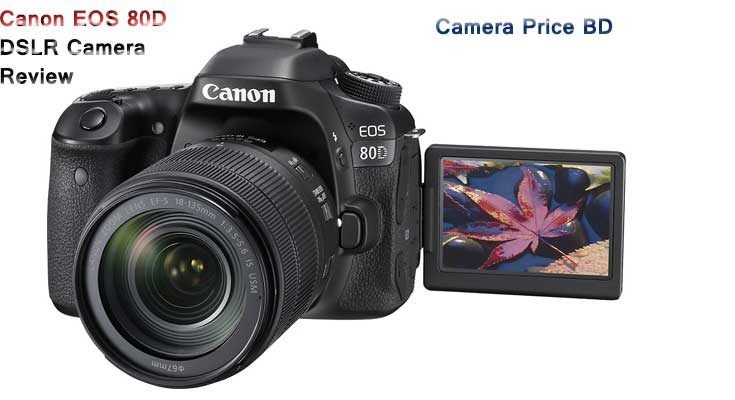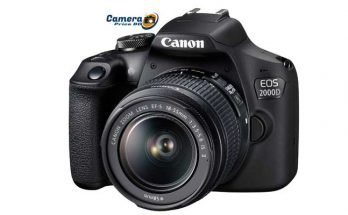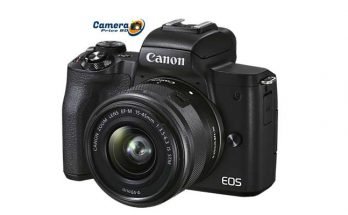Canon EOS 80D DSLR Camera Review & Features
The new Canon EOS 80D, that replaces the 70D launched in July 2013, sits smack amidst Canon’s SLR line-up, over the 760D and beneath the 7D Mark II. That places it in prime aficionado region, which implies it needs to interest individuals who need to shoot a scope of subjects in an assortment of conditions. These clients additionally need a broad list of capabilities with a lot of control choices, however, they needn’t bother with an all-out proficient level camera.
Canon has given the 80D another 24-million-pixel sensor alongside a Digic 6 preparing motor. This may sound like the 24Mp 750D and 760D, yet these lower-level cameras have Hybrid AF III gadgets, not the Dual Pixel CMOS AF sensor of the 80D.

The 80D’s sensor and processor blend bring a local affectability scope of ISO 100-16,000 (33% of a stop higher than the 70D), and the greatest extension estimation of ISO 25,600 (equivalent to the 70D).
And keep in mind that the most extreme nonstop shooting rate is equivalent to the 70D’s at 7fps, the burst profundity has been expanded to 110 JPEGs or 25 crude documents when a UHS-1 SD card is utilized; that is a huge advance up from the 65 JPEG or 16 crude records conceivable with the 70D.
Present day SLRs have two self-adjust frameworks, one for when utilizing the camera expectedly and forming pictures in the viewfinder (for example in reflex mode) and the second for use in Live View and video mode. Group has improved both of these frameworks for the 80D in correlation with the 70D.
The reflex mode framework, for example, has 45 AF focuses, which are all cross-type, though the 70D has 19 points. This implies the new camera has better AF point inclusion, making it progressively ready to discover and pursue subjects around the casing.

Moreover, the majority of the focuses are cross-type with focal points that have a most extreme gap of f/5.6 or more noteworthy while the focal 27 work at f/8 and nine of them are cross-type at f/8. That is uplifting news for anybody utilizing zooming focal point/teleconverter blends that decrease the greatest gap to f/8.
The Canon EOS 80D can likewise utilize shading data from the 7560-pixel RGB+IR (infrared) metering sensor to help with subject following.
Swinging to the Live View and video self-adjust framework, the 80D uses Dual Pixel CMOS AF innovation like the 70D, which implies it has stage discovery focuses on the imaging sensor itself.
Also Read: Canon EOS 80D DSLR Camera Price, Specs, & Reviews in Bangladesh
As per Canon, the new framework is more touchy and quicker than the one in the 70D, but since quick self-adjusting frequently isn’t attractive when you’re shooting video, it’s conceivable to shift the speed of the 80D’s framework more than seven stages for slower center changes.
Despite the fact that the 80D needs a standout amongst the most in-vogue video highlights – 4K recording – it enhances the 70D’s video offering with an earphone port for sound checking and the capacity to record Full HD (1980 x 1020) film at 50fps for 2x moderate movement playback.

Like the 70D, the 80D additionally has an outer mic port (volume can be balanced physically in-camera) just as HDMI Mini and A/V Digital out terminals, yet the 80D can record in MOV or MP4 position while the 70D can just shoot in MOV design. Ordinance’s great Video depiction highlight is additionally close by to help make progressively unique short movies in-camera.
Ordinance got locally available with Wi-Fi network in its cameras moderately at an early stage, and it’s currently beginning to incorporate NFC (Near Field Communication) in new models – including the 80D. This empowers the camera to be associated with an NFC empowered cell phone or tablet, the Canon Connect Station CS100 or other Canon cameras with only a tap.
Just as empowering pictures to be shared rapidly to the web, this network empowers the camera to be controlled remotely utilizing Canon’s free application. Moreover, if the new EF-S 18-135mm f/3.5-5.6 IS USM focal point is mounted and utilized with the Power Zoom Adapter PZ-E1 declared in the meantime, the application can be utilized to zoom the focal point starting with one central length then onto the next.

Group presented its Anti-flash framework with the 7D Mark II to help produce unsurprising presentation and shading when shooting under a light source that is inclined to gleaming (for instance bright light). This shrewd innovation, which identifies the recurrence of the flash and times shots with the goal that they’re taken when the effect on introduction and shading is insignificant, has now made it into the 80D.
Another point deserving of note is that, similar to the 5DS/R and 1DX Mark II, the 80D has Ambience need and White need alternatives for the programmed white equalization framework. Utilizing the Ambience need setting produces pictures that hold a portion of the shading made by the lighting while the White need setting is expected to evacuate the shading cast.




